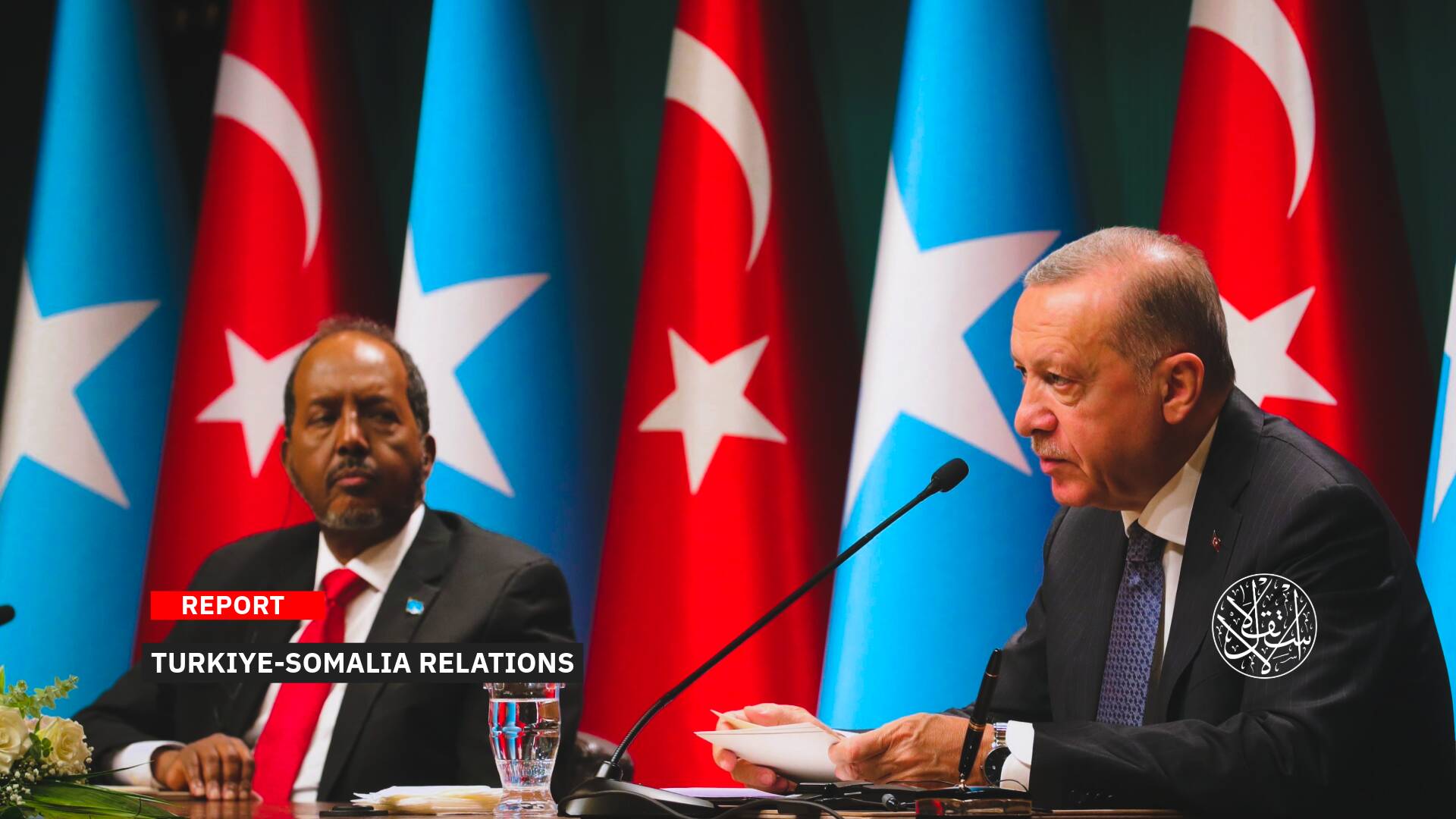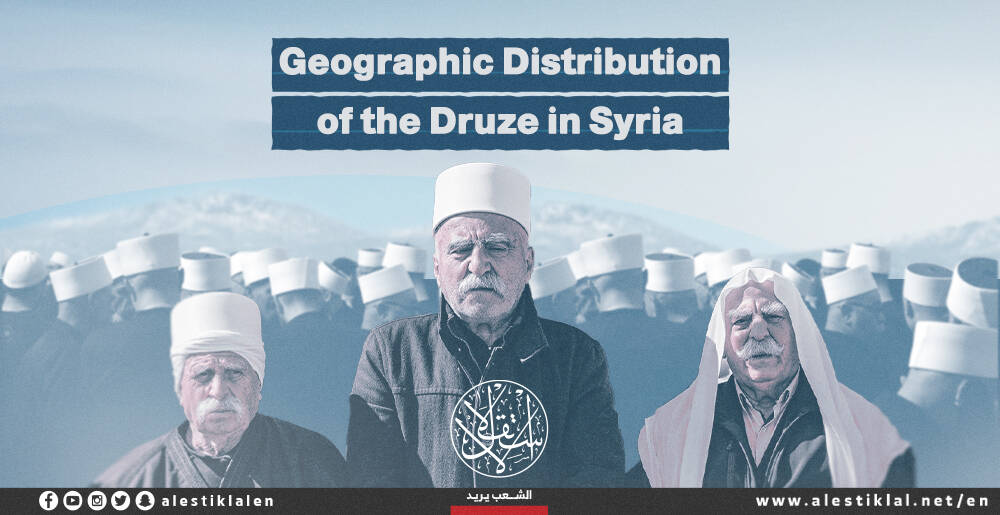In Light of the Convergence of the Numbers of Muslims and Jews, Will 'Israel' Witness a Demographic Gap Again?

A report published by The Economist on August 18, 2022, revealed a convergence of birth rates between Jews and Arabs in "Israel," noting that the increase in birth rates among Orthodox (Haredi) Jews has offset the decline in other places.
Demography in the Holy Land has a geopolitical and economic dimension, as an Israeli woman has an estimated birth rate of 2.9.
The report indicated the Israeli Occupation's population of 9.5 million, where Israeli Arabs—most of whom are Muslims—constitute about 21%, and Jews constitute about 74%; if the population of the West Bank and Gaza Strip is added, the Jewish majority is reduced by half.
According to the report, this is the basis of Israel's dilemma, as it cannot combine 3 sensitive issues: a strong Jewish majority, the retention of all the lands it occupied in 1967, and a full democracy that does not discriminate against its Arab population.
In 2018, the Israeli Knesset approved the Nationality Law, which considered "Israel" the nation-state of the Jewish people and restricted the exercise of the right to self-determination in it to the Jewish people only.
The law states settlement development is considered a national value and works to encourage and support its establishment and stabilization. It also points out that "Israel" is open to the arrival of Jews, and the state is working to preserve the Jewish cultural, historical, and religious heritage among the Jews of the Diaspora.
An Israeli Dilemma
The issue of demography has never disappeared from the minds of Israeli politicians. Since the founding of the so-called "Israel" 74 years ago, the Israelis' concern has been to achieve a numerical majority for the Jews in it.
Because "Israel" refuses to allow the establishment of a Palestinian state on the 1967 borders, including the West Bank, Jerusalem, and the Gaza Strip, "Tel Aviv" controls more than seven million Palestinians living in the area between the Mediterranean and the Jordan River.
By the end of 2021, the number of Palestinians reached about 14 million, 5.3 million in the State of Palestine, 3.2 million in the West Bank, and 2.1 million in the Gaza Strip, in addition to about 1.7 million Palestinians inside "Israel," and about 7 million in the diaspora.
On the other hand, the Israeli Central Bureau of Statistics revealed that the number of the Israeli population a month ago amounted to 9.506 million, including seven million Jews and two million Palestinians.
From the point of view of the Israeli historian Benny Morris, this situation leaves Israel in a dilemma that it does not know how to get out of, as there are today more Arabs than Jews in the Palestinian territories.
In an interview with Haaretz newspaper in January 2019, Morris pointed out that "the land between the Mediterranean and the Jordan River will inevitably become one country with an Arab majority. Israel still calls itself a Jewish state, but our rule of an occupied people without rights is not a sustainable situation in the 21st century, and once they have rights, the state will not remain Jewish."
"The only Israeli project is autonomy. Israel does not want any kind of solution, neither the two-state solution nor the one-state solution," says Palestinian Prime Minister Mohammad Shtayyeh.
Shtayyeh indicated that "Israel will die demographically because the Jewish human reservoir in the world has depleted," adding that "the conflict over Palestine will end with successive strikes, and demography is an important element in it."
Shtayyeh asserted that "Israel will not be a democratic state and will not be Jewish," pointing out that "things are going towards the South African model, whereby a Jewish minority rules an Arab majority in historic Palestine."

Demographic Gap
The late Palestinian leader Yasser Arafat, who dominated Palestinian politics for more than 3 decades, had described the womb of Arab women as the most powerful weapon in the confrontation with the Israeli Occupation.
Demographic projections were that the number of Arabs living between the Jordan River and the Mediterranean would eventually outnumber Jews, which worried Israeli political elites.
In 2003, former Prime Minister Benjamin Netanyahu lamented that the Israeli Arab birth rate - which was higher than it is now - threatened Israel's Judaism, regardless of the trend in the West Bank and Gaza.
At that time, there was already a wide demographic gap. In "Israel" itself, Arab women had about twice as many children as Jewish women, but this gap has narrowed in the past few decades, as the birth rate of Israeli Arabs has fallen and the birth rate of Jews has risen.
In 1960, the birth rate for Arab women in "Israel" was 9.3, but in the following decades, the percentage decreased to 4.7 before it reached 3 today.
Birth rates for Palestinian women in the West Bank and Gaza decreased from 4.6 in 2003 to 3.8 in 2019.
According to the Pew Research Center, Muslims globally have the highest fertility rate of any religious group. However, that rate has fallen sharply, from 4.3 in 1995 to 2.9 in 2015.
This makes the high birth rate of Israeli Jews even more surprising, according to the report.
Between 1960 and 1990, their fertility dropped from 3.4 to 2.6 but then started to reverse this trend, causing the birth rate to rise to its current level of 3.1.
Most of the reasons for this increase are attributed to the growing number of ultra-Orthodox (Haredi) Jews in "Israel," who have a fertility rate of 6.6, more than double the national average and three times the rate of secular Jews.

The economist at Tel Aviv University, Dan Ben David, says that "the participation of Haredim in Israel has increased with each generation. Although they constitute only 13% of the total population of Israel, their children constitute 19% of Israeli children under the age of 14 and 24% of children under the age of four."
In light of the current trend, the Department of Statistics believes that half of the Israelis will be Haredim by 2065.
Perhaps the rabbis and ultra-nationalists are happy with this, but the increase of the Haredim will change the shape of "Israel" and threaten its economy, says Ben David. That is due to religious Jews teaching their children the Torah in religious schools instead of teaching them the materials needed for the jobs in the Israeli economy.
It is pointed out that there are several reasons behind the increase in the number of Orthodox Jews, perhaps to compensate for those who died in the Holocaust or the belief that procreation is a religious duty.
There are those who believe that Israelis give birth because they dream of a rosy future, as "Israel" is among the 10 happiest countries in the world.
But the report finds that it is difficult to explain why secular Israeli Jews also have more children than usual, and this may be due to the state's encouragement to have children, for example, by funding fertility treatment.
The state assists in procreation, supports fertility treatment and allocates $150 million to fund in vitro fertilization operations. "Israel" has frozen embryos like the United States does.
Perhaps this will not have an effect on fertility rates, but it shows the state's keenness to increase fertility rates.
Another factor is that grandparents provide support to mothers after childbirth.

The Collapse of Zionism
In 2020, for the first time in several decades, the number of Arabs living between the Mediterranean and the Jordan River rose slightly above the Jewish population, according to an analysis by two research groups linked to the Israel Defense establishment.
Despite some changes in birth rate trends, this small Palestinian majority will become large within a decade or two.
This means that if the status quo continues and "Israel" continues to dominate the West Bank, it will soon face a severe dilemma, and expectations are that "Israel," as a democratic Jewish state, will cease to exist.
In turn, the President of the World Jewish Congress, Ronald Lauder, stressed in an opinion piece published by The Washington Post on July 13, 2022, that "there is no external threat to the Zionist project like this internal demographic threat."
He added: "The basic premise of Zionism is that there must be one place on earth where the Jews are the majority - so that this majority can exercise its right to self-determination in a democratic framework. If the Jews do not have a strong majority in their land, Zionism will collapse."

In turn, the expert on Israeli affairs, Mr. Ismail Maslamani, explained in a statement to Al-Estiklal that “Israel has always considered the Arabs of the interior as a demographic problem for it, although they obtained Israeli citizenship, they are still a problem, but with a political dimension, especially with their entry into the Knesset.”
“After the battle of the sword of Jerusalem, it became clear how there has become a great dilemma in thought and behavior between Arabs and Jews in Israel; that is, there has become a rift between the segments of society and is expanding socially and politically, amid Jewish calls to expel the Arabs of the interior to Jordan or the West Bank,” he added.
In response to complaints that the Palestinians' refusal to be expelled from their lands will lead to their number being outnumbered by the Jews in “Israel”, Mr. Maslamani explained that “he did not expect that scenario because the Palestinian at home is still 20%, and Israel is still seeking to bring in immigrants from abroad.”
“Israel does not accept full equality, and that is why it presents itself as a democratic Jewish state, but the last law that was passed in 2018 is essentially a national law and it torpedoes everything that was previously negotiated, including Jerusalem and the language. It also became clear through the law that it is directed at the Jews and that the state is for the Jews,” he noted.













